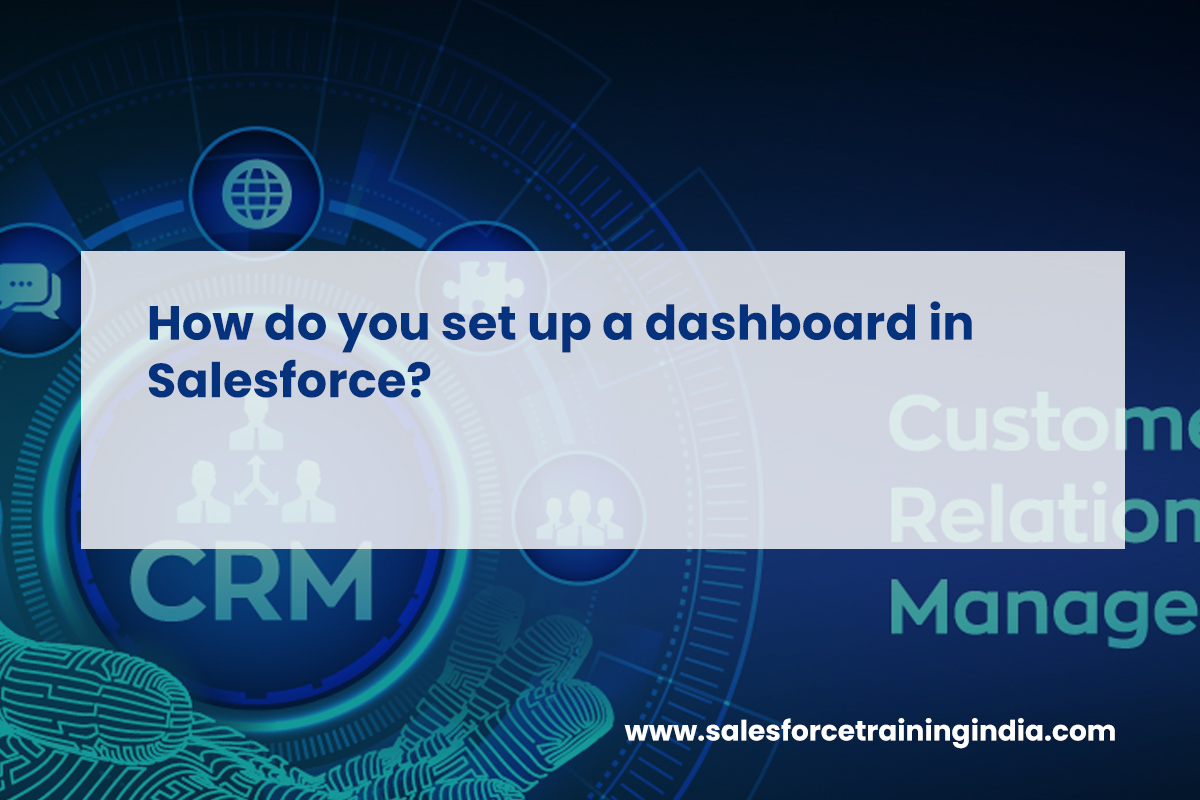Setting up a dashboard in Salesforce involves creating a visual representation of various reports, providing a comprehensive overview of the business metrics that matter most to an organization. Dashboards are powerful tools for summarizing and presenting data in an easily digestible format, often using charts, gauges, tables, and other graphical components.
To create a dashboard, follow these steps:
- Create Reports for Dashboard Components: Before you can create a dashboard, you need to have reports. Each component of a dashboard is based on a report. Ensure the reports provide the data you want to display on the dashboard.
- Create the Dashboard: Navigate to the Dashboards tab in Salesforce and click ‘New Dashboard’. Give your dashboard a name and description. Then, you can start adding components. When adding a component, you select the source report and the type of visualization (e.g., bar chart, pie chart, gauge, etc.). Customize each component according to your needs, setting things like the size, label, and display options.
- Arrange and Customize Components: Once components are added, you can arrange them on the dashboard grid. This layout phase is crucial for ensuring that the dashboard is easy to understand and visually appealing. You can also apply filters to the dashboard to control the data that is displayed across all components.
After setting up the dashboard, you can save and share it with other users or user groups in your Salesforce organization, based on their permissions. This sharing is critical for ensuring that the right stakeholders have access to pertinent business insights. Salesforce dashboards are dynamic, automatically updating as the underlying data changes, providing a real-time snapshot of performance metrics and trends.
Are you ready to elevate your Salesforce skills? Dive into our specialized Salesforce training in Hyderabad, meticulously designed to provide hands-on experience and real-time knowledge. Our comprehensive, project-based course ensures you gain practical skills with daily notes, engaging projects, and targeted preparation for certifications and interviews, preparing you thoroughly for the dynamic Salesforce ecosystem.





